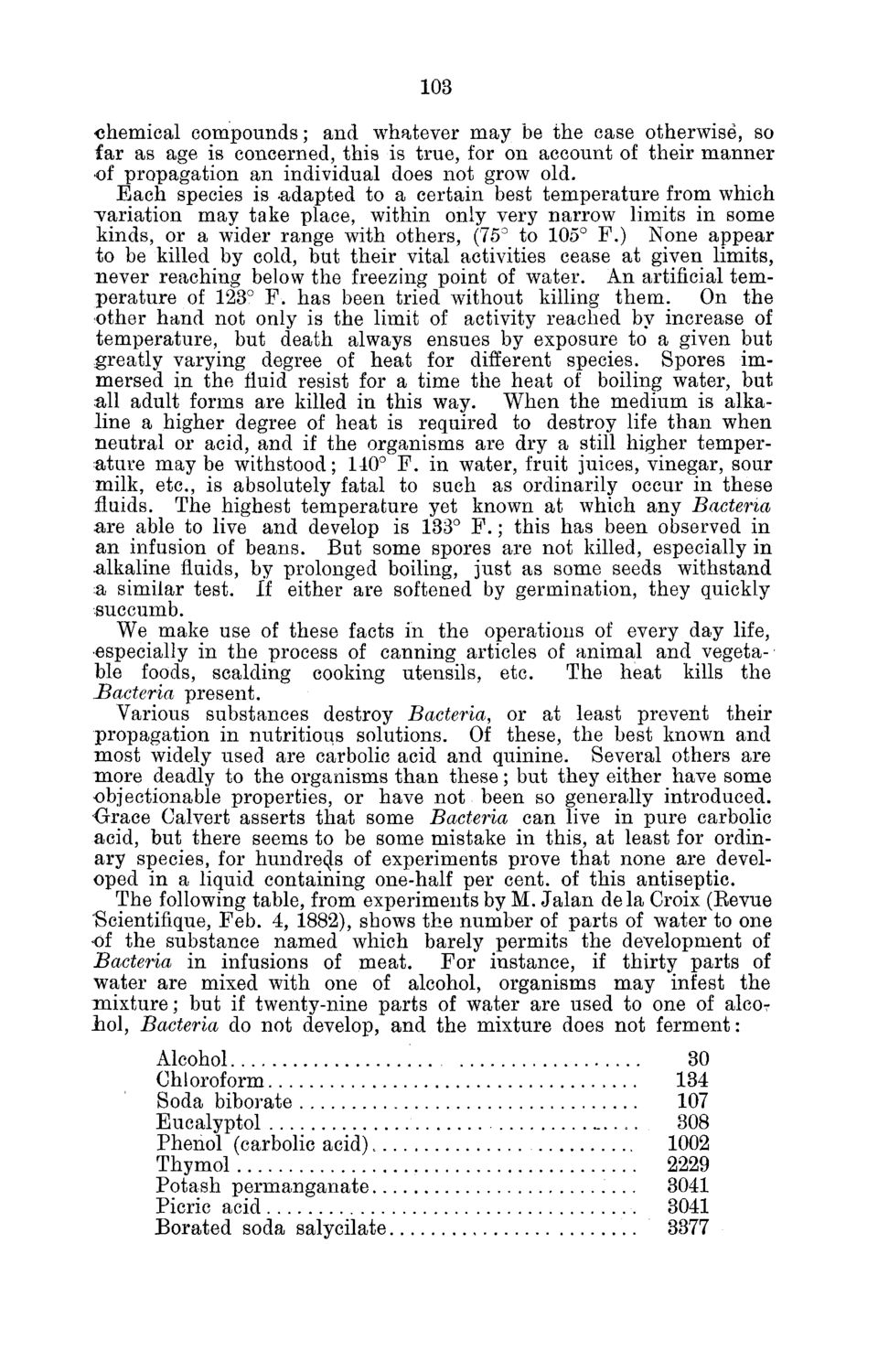| |
| |
Caption: Board of Trustees Minutes - 1882
This is a reduced-resolution page image for fast online browsing.

EXTRACTED TEXT FROM PAGE:
103 chemical compounds; and whatever may be the case otherwise, so far as age is concerned, this is true, for on account of their manner of propagation an individual does not grow old. Each species is -adapted to a certain best temperature from which variation may take place, within only very narrow limits in some kinds, or a wider range with others, (75° to 105° F.) None appear to be killed by cold, but their vital activities cease at given limits, never reaching below the freezing point of water. An artificial temperature of 123° F . has been tried without killing them. On the other hand not only is the limit of activity reached by increase of temperature, but death always ensues by exposure to a given but greatly varying degree of heat for different species. Spores immersed in the fluid resist for a time the heat of boiling water, but all adult forms are killed in this way. When the medium is alkaline a higher degree of heat is required to destroy life than when neutral or acid, and if the organisms are dry a still higher temperature may be withstood; 140° F . in water, fruit juices, vinegar, sour milk, etc., is absolutely fatal to such as ordinarily occur in these fluids. The highest temperature yet known at which any Bacteria are able to live and develop is 133° F . ; this has been observed in an infusion of beans. But some spores are not killed, especially in alkaline fluids, by prolonged boiling, just as some seeds withstand a similar test. If either are softened by germination, they quickly succumb. We make use of these facts in the operations of every day life, especially in the process of canning articles of animal and vegetable foods, scalding cooking utensils, etc. The heat kills the Bacteria present. Various substances destroy Bacteria, or at least prevent their propagation in nutritious solutions. Of these, the best known and most widely used are carbolic acid and quinine. Several others are more deadly to the organisms than these; but they either have some objectionable properties, or have not been so generally introduced. Grace Calvert asserts that some Bacteria can live in pure carbolic acid, but there seems to be some mistake in this, at least for ordinary species, for hundre4s of experiments prove that none are developed in a liquid containing one-half per cent, of this antiseptic. The following table, from experiments by M. Jalan de la Croix (Eevue Scientifique, Feb. 4, 1882), shows the number of parts of water to one of the substance named which barely permits the development of Bacteria in infusions of meat. For instance, if thirty parts of water are mixed with one of alcohol, organisms may infest the mixture; but if twenty-nine parts of water are used to one of alcor i o l , Bacteria do not develop, and the mixture does not ferment: Alcohol Chloroform Soda biborate Eucalyptol Phenol (carbolic acid)< Thymol Potash permanganate Picric acid Borated soda salycilate 30 134 107 308 1002 2229 3041 3041 3377 ..
| |